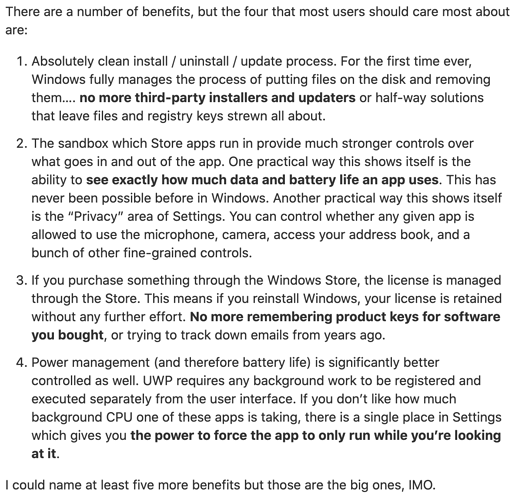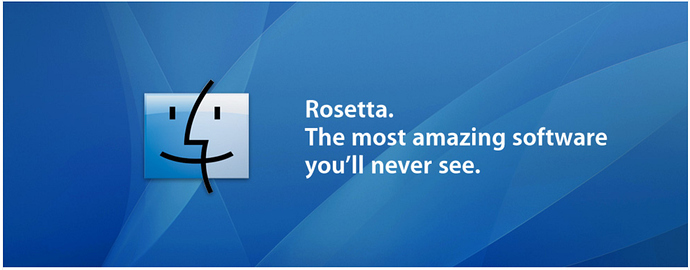Universal Windows Platform
Porting You Are Hope to the Microsoft Store as a UWP game would allow it to run on Windows 10, Windows Phone, and Xbox with no hassle whatsoever.
A UWP app is:
- Secure: UWP apps declare which device resources and data they access. The user must authorize that access.
- Able to use a common API on all devices that run Windows 10.
- Able to use device specific capabilities and adapt the UI to different device screen sizes, resolutions, and DPI.
- Available from the Microsoft Store on all devices (or only those that you specify) that run on Windows 10. The Microsoft Store provides multiple ways to make money on your app.
- Able to be installed and uninstalled without risk to the machine or incurring “machine rot”.
- Engaging: use live tiles, push notifications, and user activities that interact with Windows Timeline and Cortana’s Pick Up Where I Left Off, to engage users.
- Programmable in C#, C++, Visual Basic, and Javascript. For UI, use XAML, HTML, or DirectX.
Also, porting the game to the Mac App Store has become even easier due to the transition to ARM architecture (the same kinds of chips used in iPhones and iPads).
Further, the ARM-based chips will allow iOS apps to run natively on Macs, which means iOS developers will be able to more easily expand their user base and integrate their software across Apple’s ecosystem.
TL;DR: The macOS ARM transition will establish a common architecture across all Apple products, making it far easier for developers to write and optimize their apps for the entire ecosystem.
All that really has to be done is to optimize the game for PC and Mac input methods (keyboard and mouse/trackpad).
Universal 2
The new Universal 2 application format allows developers to package the same app with both Intel and ARM executables. If you are wondering where the “2” comes from, Apple introduced the original Universal application format to support both PowerPC and Intel-based Macs.
I cannot imagine that compiling an app is that hard.
Rosetta 2
Apple created the original Rosetta for support running PowerPC based application on Intel-based processor. Similar to the original Rosetta, the new Rosetta 2 will seamlessly translate the apps written for Intel to run on the ARM platform.
The whole translation process truly is spectacular.
Developers can apply for the Universal App Quick Start Program at
developer.apple.com, and the cost is $500, which includes the ARM-based Mac mini. At the WWDC20 keynote where the transition to ARM was announced, Tim Cook was not clear about the program timeline, but he excepted the transition to take about two years.
We exepect to ship our first Mac with Apple silicon by the end of this year, and we expect the transition to take about two years. — Tim Cook WWDC 2020
We plan to continue to support and release new versions of macOS for Intel-based Macs for years to come. In fact, we have some new Intel-based Macs in the pipeline that we’re realy excited about. — Tim Cook WWDC 2020


 but I agree crossing platforms is gold tbh, maybe make it an official version some how and like cross platforms with the original game?
but I agree crossing platforms is gold tbh, maybe make it an official version some how and like cross platforms with the original game?
 . so on the market is already a strong competitor with almost the same game. and all the inputs like touch gestures would have to be redone to point and click. also the whole user interface is optimized for mobile. you can’t just put it on a bigger screen without adjusting. i see a lot of developer work go into an game adaptation for computer. if there is a market for it, it might work. but i doubt it’s gonna happen.
. so on the market is already a strong competitor with almost the same game. and all the inputs like touch gestures would have to be redone to point and click. also the whole user interface is optimized for mobile. you can’t just put it on a bigger screen without adjusting. i see a lot of developer work go into an game adaptation for computer. if there is a market for it, it might work. but i doubt it’s gonna happen.